Edible Wild Plants: Common Chickweed (Stellaria media)
Common Chickweed grows almost anywhere, and is a common garden weed. Its appearance varies greatly, but generally it has a very slender tap root and greatly branching leafy stems, which lie along the ground. The lower leaves vary in size from 3 to 20 mm in length, they are oval in shape, and have long stalks; the upper leaves tend to be larger (up to 25 mm in length) and lack stalks. Many small, white flowers are produced; the stamens have reddish-violet anthers. The flowers are visited by many small flies and bees.
Common Name | Common Chickweed
Species | Stellaria media
Edible Parts | Leaves, flowers, seeds, root
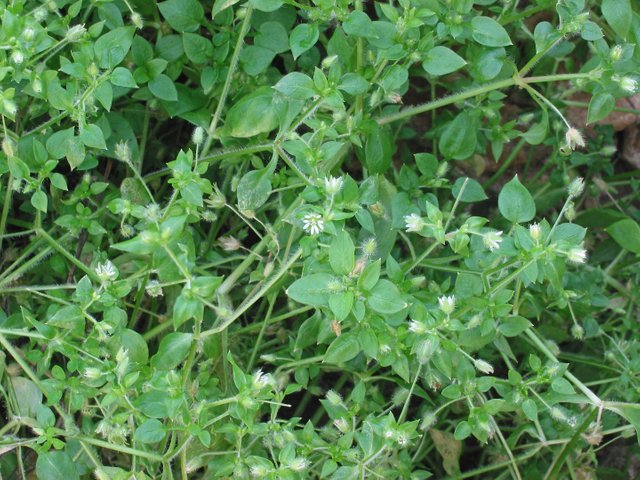
Precautions
The leaves contain saponins. Although toxic, saponins are poorly absorbed by the body and so tend to pass through without causing harm. They are also broken down by thorough cooking. Saponins are found in many plants, including several that are often used for food, such as certain beans, oats, and spinach.
Growth and Habitat
Chickweed occurs either as an annual species or as a short-lived perennial, and produces several generations a year, each one flowering after just 5 weeks of growth. It can remain green and often in flower throughout winter, although it will not survive a significant frost. Chickweed is widespread and common throughout the world. It is found in a wide variety of disturbed habitats, particularly in nutrient-rich areas.
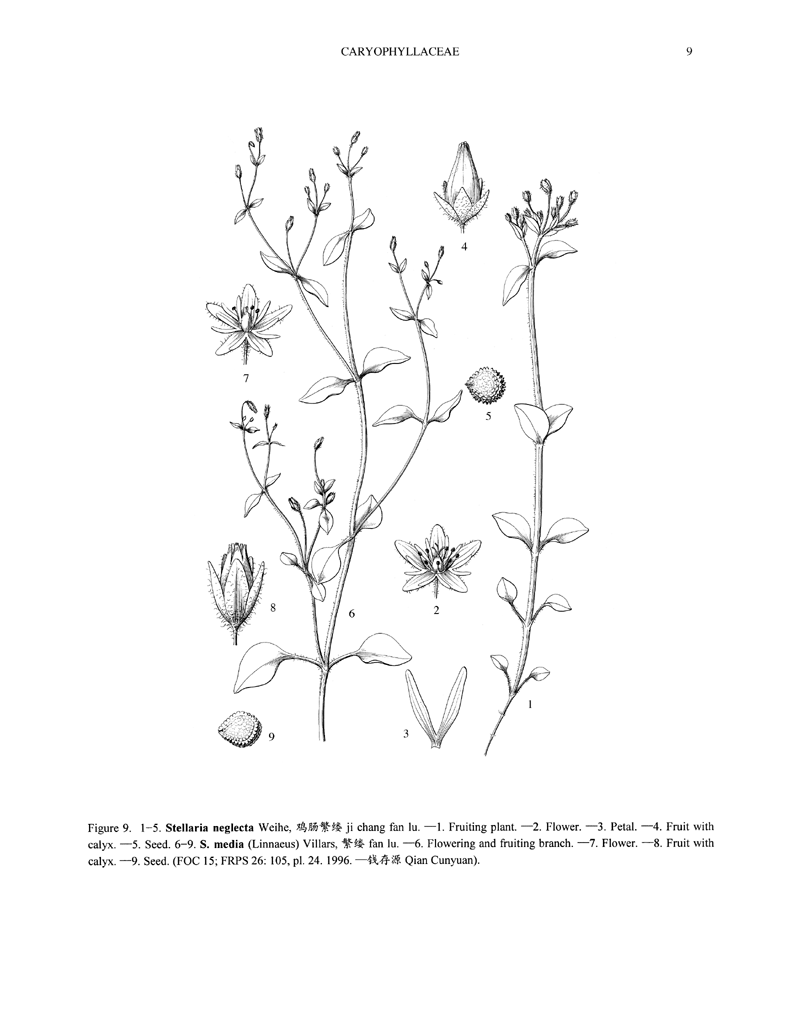
Edible Parts
All parts of the plant are edible, including the leaves, flowers, seeds, and root. The young leaves are the most palatable, and can be prepared as you would any tender greens, such as part of a salad. The leaves are often lightly cooked; either alone or as an addition to stir-fry. Common chickweed is highly prized as a food for poultry and cage-birds, and may attract wildlife.
Identification
- Slender, smooth stems to about 30 cm long.
- One row of tiny hairs growing in a row on one side of the stem, switching to other side at each pair of opposite, oval pointed leaves.
- Old leaves have stalks, young leaves do not.
- Flowers, small, white with five petals so deeply notched that they look like ten petals.
- Does NOT have milky sap. If you have a plant you think is chickweed and it has milky sap you have the wrong plant.
Images
Young plant:
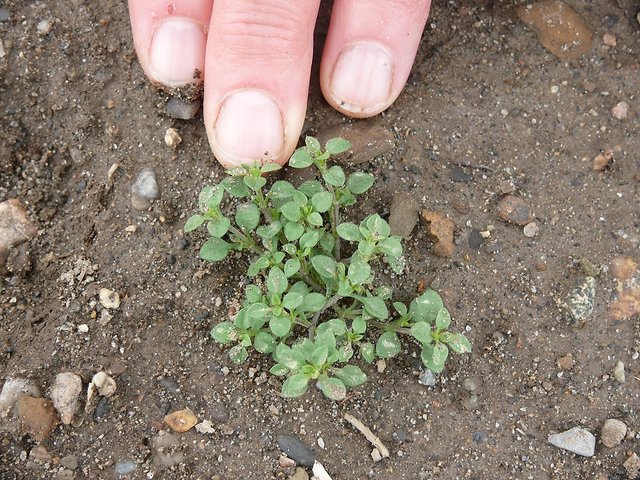
Flower and leaf:
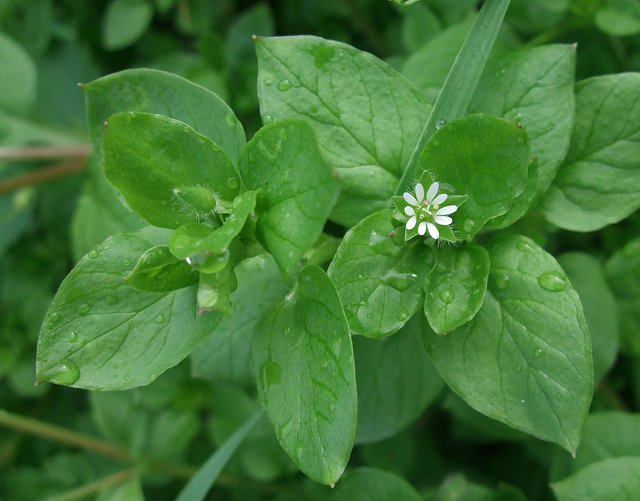
Growing plant:
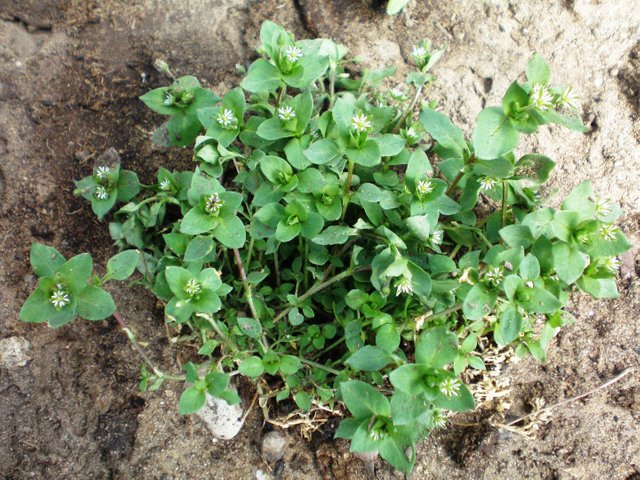
Sources:
Fantastic post! Keep them coming!
yes I recognize this weed, didn't think it was edible
does it taste good though?
you left out the most important haha